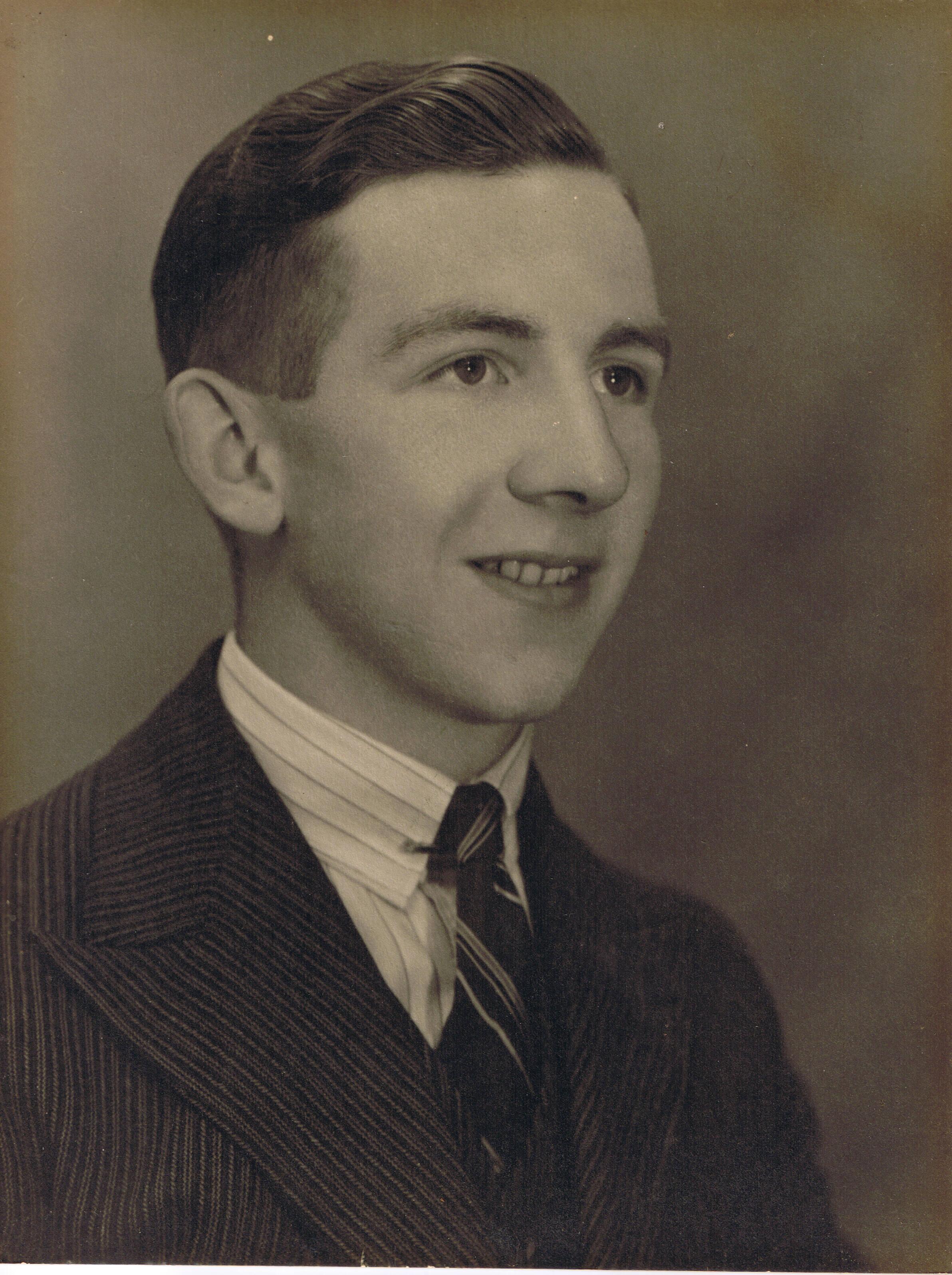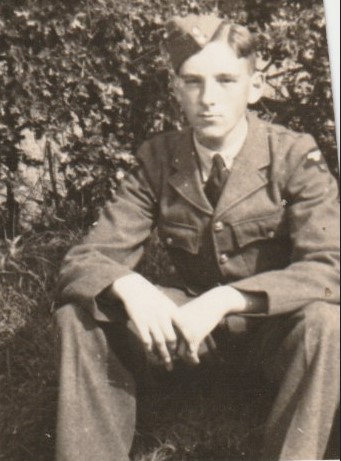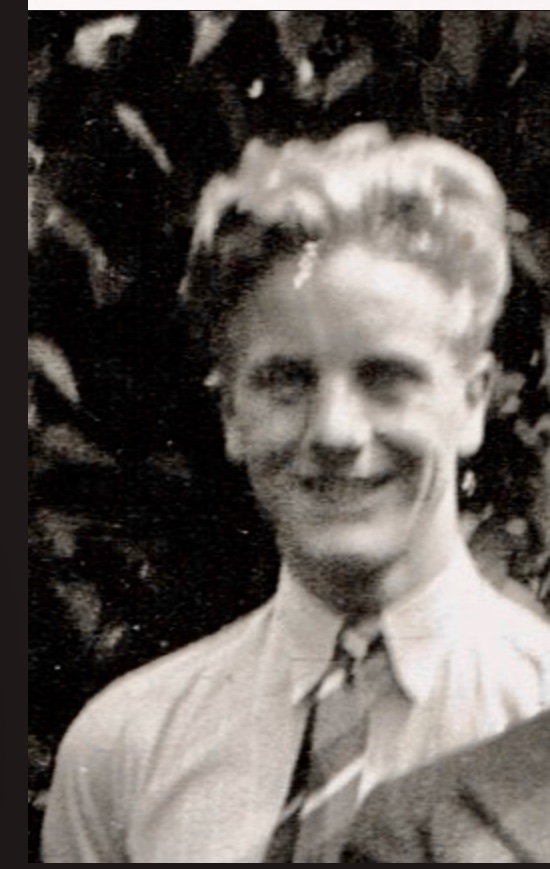Armstrong Whitworth Whitley, Off Co. Cork, April 1942
On the 28th of May 1942, the body of a dead man was found in
the water at the strand in Beach townland about two miles west
of Bantry by a Mr John McDonald from the town.
A note in the AIR81/13575 file on the loss records that the
remains were hastily buried by the same day in in the
"Protestant cemetery" at Bantry without any ceremony and it was
the following day before the local rector, Revd. G J Russell was
able to hold a grave side service with 30 local
parishioners. The burial was carried out at the Abbey
Cemetery also west of the town at the site of a former Abbey.
The death of a 27 year old male 'R.A.F.
Sergeant" was registered on the 2nd of June with
no inquest being held, the informant being John McDonald.
Cause of death was assumed to have been drowning. While
the mans age, marital status and occupation were recorded, no
name was entered on the death register, in place of a name was
written "From Islington, Ontario, Canada". The register
entry does not appear to have been updated following the receipt
of the information from the Canadian High Commissioner described
below.
This fact was passed on to the Canadian High Commissioner for
Canada in Ireland and the dead man was identified by as F/Sgt
Dudley Newlove, serial number R/71577.
A note found in the AIR81/13575 Casualty file recorded:
Body washed up. On
28.5.42. at a place two miles west of Bantry, the body
of Flt.Sergeant NEWLOVE, Royal Canadian Air Force was
washed ashore. The sanitary officer took charge of the
remains, and had them buried the same day
without any ceremony, in the Protestant
cemetery at Bantry. Revd. G.J.Russell,
the rector, had intended having the burial the following
day, but found the internment had taken place already; he
therefore conducted a burial service at the grave the next
day, about 30 of his parishioners being present.
The cemetery mentioned above was the Bantry Abbey Cemetery
which looks out over
The ORB for 58 Squadron records very simply:
On 20th April, 1942, …….. were the crew
of an aircraft which took off from St Eval on a navigation
exercise. A signal was received at 18:45 that the
aircraft was returning to based but failed to return and was
consequently posted as missing with the crew as named above.
The Squadron had only just transferred to St Eval at the
beginning of that month on assignment to Coastal Command.
Prior to this, they had been flying bombing missions over Europe
with Bomber Command.
On the 8th April 1942, 58 Squadron was placed under the command
of Coastal Command in support of Atlantic Convoys and moved from
RAF Litton on Ouse to to RAF St Eval in Cornwall.
The crew consisted of six men:
Sgt Kenmir Loudon MCADAM NZ41485, Royal New Zealand Air Force,
the Pilot and Captain of the crew
F/Sgt Dudley NEWLOVE R/71577, Royal Canadian Air Force, Second
Pilot
and four Royal Air Force Sergeants:
Sgt Archer Thomas George GOUGH 1375829 the Air Observer
(navigator)
Sgt Reginald John HARWOOD 952271 Wireless Operator/Air Gunner
Sgt James MCCLELLAND 903057, Wireless Operator/Air Gunner
Sgt Patrick Joseph LEAHY 903435, Air Gunner
A. Aircraft was engaged on an
operational training flight over the Atlantic Weather
conditions were good with a calm sea.
B. A signal was received from "A" 58 Sqdn. at 1740
hours stating that the aircraft was returning to base with
engine trouble. Its position could not be
plotted owing to a corrupt group. No immediate
priority was given to the message and it was therefore
assumed that the Captain was not unduly worried as no S.O.S.
was sent. At 1743 the aircraft again came up and said
it was changing over to M/F. At 1753 the aircraft was
heard on M/F sending its call sign and dashes, but, as it
gave no immediate priority, it was instructed to PLYMPTON to
wait as PLYMPTON was working another aircraft. After
that nothing further was heard of the aircraft. Later,
however, "A" 58 Sqdn. landed at Base and on investigation it
was found that this aircraft had not sent any such signals.
"W” of "58" (Whitley V. Z.9388) did not return to Base and
it can only be assumed that the signals, which were thought
to have come from "A" had actually been sent by "V" as that
was the only aircraft in the Sqdn which could have sent such
a message. The wireless operator was very experienced and
had been ditched in a Whitley on two previous occasions and
was well aware of the correct W/T procedure.
C. No explanation can be given as to
the cause of the loss of the aircraft and although a search
was carried out by ten aircraft from dawn the next morning
no trace could be found of the missing crew.
 Kenmir Louden
McAdam was born in Dunedin, New Zealand to Mabel Maud and
Charles McAdam in February 1918. In his attestation papers in
1941, he recorded that he had flown a pleasure flight with
Kingsford Smith in Christchurch in 1933. At the tiem of
his enlistment, he was working as a secretary with Otago
Buildings and Investment.
Kenmir Louden
McAdam was born in Dunedin, New Zealand to Mabel Maud and
Charles McAdam in February 1918. In his attestation papers in
1941, he recorded that he had flown a pleasure flight with
Kingsford Smith in Christchurch in 1933. At the tiem of
his enlistment, he was working as a secretary with Otago
Buildings and Investment.
Following his course with No 1 Elementary Flying Training School at Taieri, New Zealand, he undertook further training at 1 Flying Training School until July that year. He was awarded his flying badge in May 1941. His departure to teh UK seen him arrive there at the start of September where he was posted to No 3 PRC, and a few days later to 10 Operational Training Unit. After this period of training on Whitley aircraft, he was posted to 58 Squadron in the middle of December 1941.
McAdam's first mission was (apparently) 11 Feb to Mannheim.
As late as April 1950, the New Zealand Air Secretary was
writing to his mother to inform her that after eight years,
arrangements were being made to add his name to a then planned
memorial to missing air crew.
 Dudley
Newlove was born on 27 Sep 1914 to William and Olive
Newlove, in Islington, Ontario.
Dudley
Newlove was born on 27 Sep 1914 to William and Olive
Newlove, in Islington, Ontario.
He began his flight training at 2 EFTS at Fort William, XXX, completing his training at 5 SFTS at Brantford. Following award of his wings, he was posted overseas to England in July 1941. He found himself next at 19 Operational Training Unit where he would have converted to flying the Whitley aircraft and finally to 58 Squadron in October 1941. The unit was at that time engaged in bombing missions with Bomber Command. His first bombing mission was on 1st Nov flying with a Sgt Stark and crew. He does not appear on any other missions during the month however. Indeed, his next mission appears to have been 12th Mar 1942 to Emden. Its not clear from records why there is this long gap in operations. He flew a small number of raids as second pilot to Sgt Scrivens during the month.
Newpapers in Ontario began to report on his loss during June
1942, with the following from the Expositor in Brantford,
Ontario:
Canadian Is Buried In Ireland
Graduate of No 5 Is Washed Ashore at Eire.
Word received by Mr and Mrs Newlove, Islington that the
body at their son Sergeant-Pilot Dudley Newlove, who
received his wings at No 5 S.F.T.S. in May 1941 and was
killed overseas April 20, has been washed ashore on the
southern coast of Ireland. He was buried at Bantry, in Eire.
Sgt-Pllot Newlove was killed in an operation over the
Atlantic.
Sgt-Pllot Newlove celebrated his 27th birthday overseas.
Born in Islington, he was educated at Islington public
school and Etobicoke high school. Later he graduated from
Toronto Normal School.
Always keenly interested in sports he was captain of the
Islington junior lacrosse team later playing on the senior
team. He also was a popular member of the Swing Club
baseball team for a number of years. Following his
graduation from high school junior rugby team for a season.
Golfing and skiing were other sports popular with the young
flier.
He possessed a highly developed artistic and literary
ability and a number of fine oil paintings were done by him
while studying art under W. J. Cranley, Toronto artist. His
ability as a writer of fiction was well known to his many
friends but it was not until after he had joined the air
force that it became known to his parents that he had almost
completed the writing of a book.
He enlisted In the R.C.A.F. in August 1940. He received his
training at Brandon, Vancouver, Regina, Fort William and
Brantford. He went overseas in June 1941 and further
trained in England and Scotland.
While in Scotland he told his mother in a letter that he
"got a big kick" out of being invited to visit a village
school as a guest teacher for an afternoon when the subject
being taught was Canadian geography. He had taken part in
many bombing raids over enemy territory having on one
occasion been shot down over the North Sea and being adrift
in a rubber boat for several hours until rescued. Just two
weeks before he met death he had been transferred to coastal
patrol duty.
It is not yet known what the ditching mentioned refers to,
there is no mention of such a loss in the ORB, but that document
tends to only report operational subject, so something might
have happened on a traiing flight. At the same time, there
is no
Archer Thomas George Gough was born in 1913 to
Frederick and Sarah Gough in Lewisham, London. The 1939
register finds him residing at home with his widowed father and
three sisters. His occupation at that time his
listed as "printer on metal".
He was posted into 58 Sqn on 5 Nov 1941. His first
mission, including Leahy in the crew was 31st January 1942 on
Z9388 to Paris to drop propaganda leaflets.
James McClelland was born in September 1919 in Paisley,
Scotland, to parents Catherine and Robert McClelland. By
the time of the 1939 register being taken up, he is found at
home with his parents and sister, Isabel, at Shirehall Park,
Hendon, outside London, where he is recorded as being an RAF LAC
home on leave. He was posted into 58 Sqn on 2x Oct
1941. His first apparent mission is on 28/29 January 1942
on a bombing mission to Boulogne, France.
 Reginald
Harwood was born in in Birmingham in August 1916.
His parents were Amy Constance and Edward Harwood. The
1939 register find him living with his parents and older sister,
Dorothy. He appears to be listed as crew member on raids
during January and February 1942 but had been posted into 58
Squadron in June 1941. His first raid were during
the following month with a P/O I A N Atchinson. They were
hit by flak on the 7th August 1941, and forced to ditch Whitley
T4158 in the sea off Calais/Dover and were rescued by RAF high
speed launch HSL145 Three nights before their aircraft had
also been hit by flak and they returned with their observer
injured. They were back in action on the night of 25th
August.
Reginald
Harwood was born in in Birmingham in August 1916.
His parents were Amy Constance and Edward Harwood. The
1939 register find him living with his parents and older sister,
Dorothy. He appears to be listed as crew member on raids
during January and February 1942 but had been posted into 58
Squadron in June 1941. His first raid were during
the following month with a P/O I A N Atchinson. They were
hit by flak on the 7th August 1941, and forced to ditch Whitley
T4158 in the sea off Calais/Dover and were rescued by RAF high
speed launch HSL145 Three nights before their aircraft had
also been hit by flak and they returned with their observer
injured. They were back in action on the night of 25th
August.
He had survived yet another ditching on 11 October 1941
returning from a raid on Essen. His captain put the
aircraft, Whitley Z9204 down on the sea near Skegness and they
were recovered by that towns lifeboat uninjured.
His remains were never found and he is listed on the Runnymede
memorial.
 Patrick
Joseph Leahy was born on to John and Edith Leahy in
Bermondsley in November 1919. In the 1939 Register he can
be found living with his parents, as an AC2 in the RAF. A
brother named Bernard was also present at home at the time as
well as a Thomas Leahy, thought to be an uncle. His
casualty file mentions another brother named William and he had
three other siblings.
Patrick
Joseph Leahy was born on to John and Edith Leahy in
Bermondsley in November 1919. In the 1939 Register he can
be found living with his parents, as an AC2 in the RAF. A
brother named Bernard was also present at home at the time as
well as a Thomas Leahy, thought to be an uncle. His
casualty file mentions another brother named William and he had
three other siblings.
he as posted into 58 Squadron on the 24th September 1941.
Patrick was married in late 1940 to Yvonne Haddon in
Bermondslay, and they had daughter born around that same time.
The grave of Sgt Newlove has been a frequent subject of
newspaper articles and letters to editors over the years.
In July 1986, the Warplane Reaserch Group of Ireland arranged
the placement of a memorial plaque to the crew of Z9388 and this
was unveiled with members of Sgt McAdams family at Bantry House.
Compiled by Dennis Burke, 2022.
